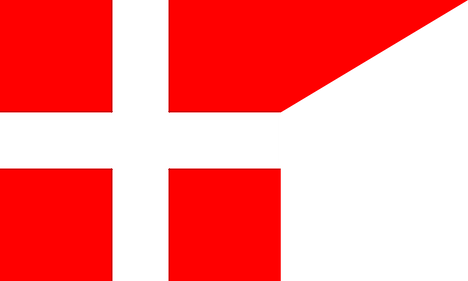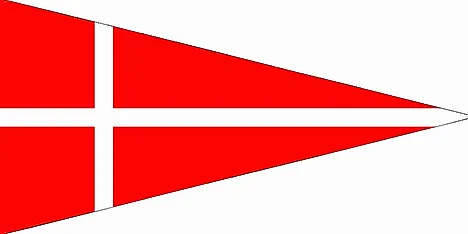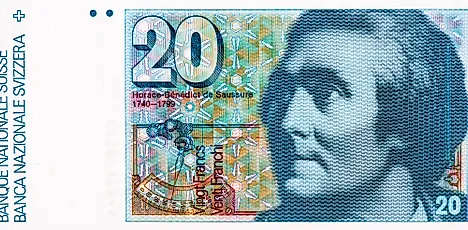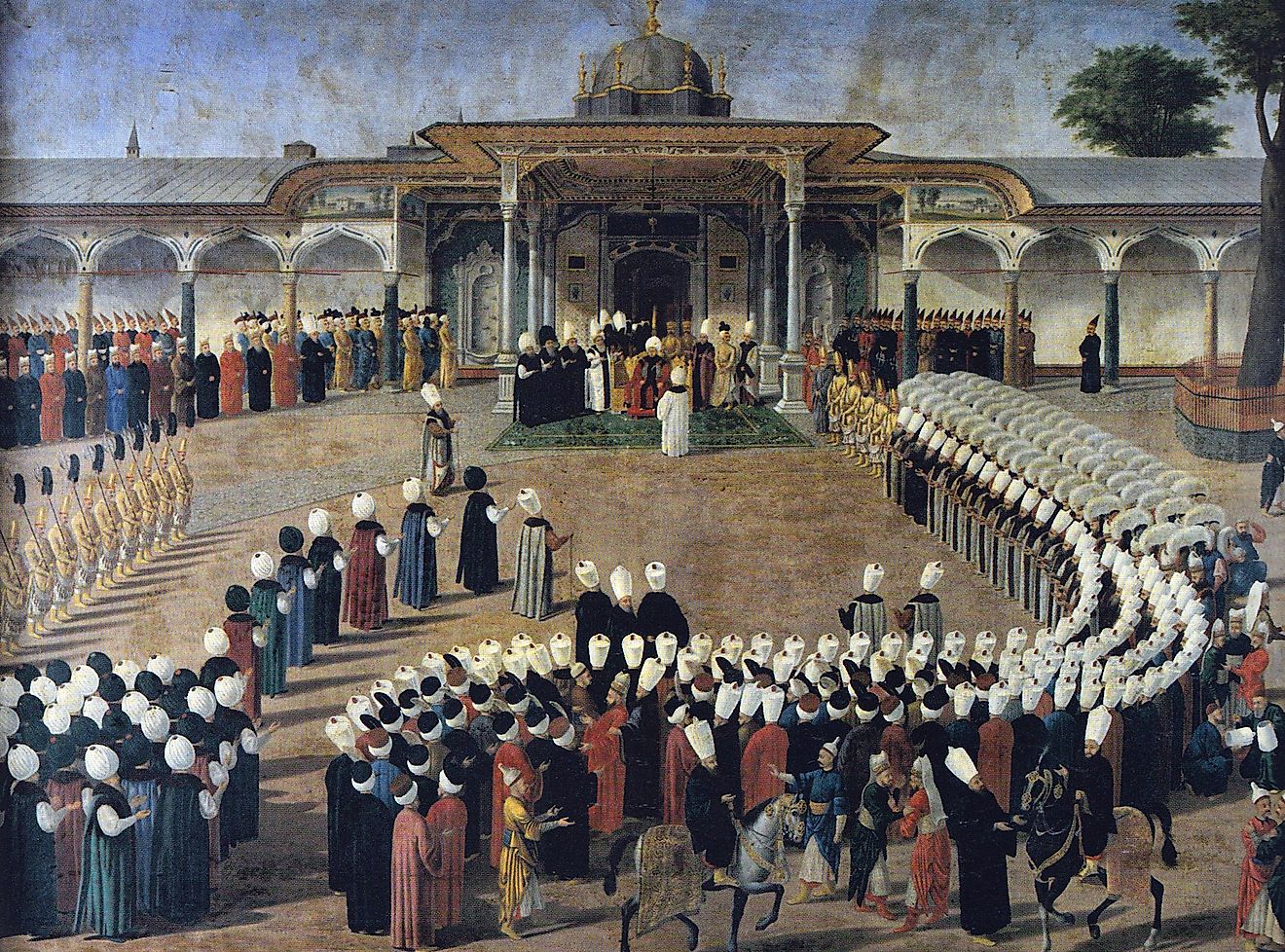Flags, Symbols & Currency of Switzerland
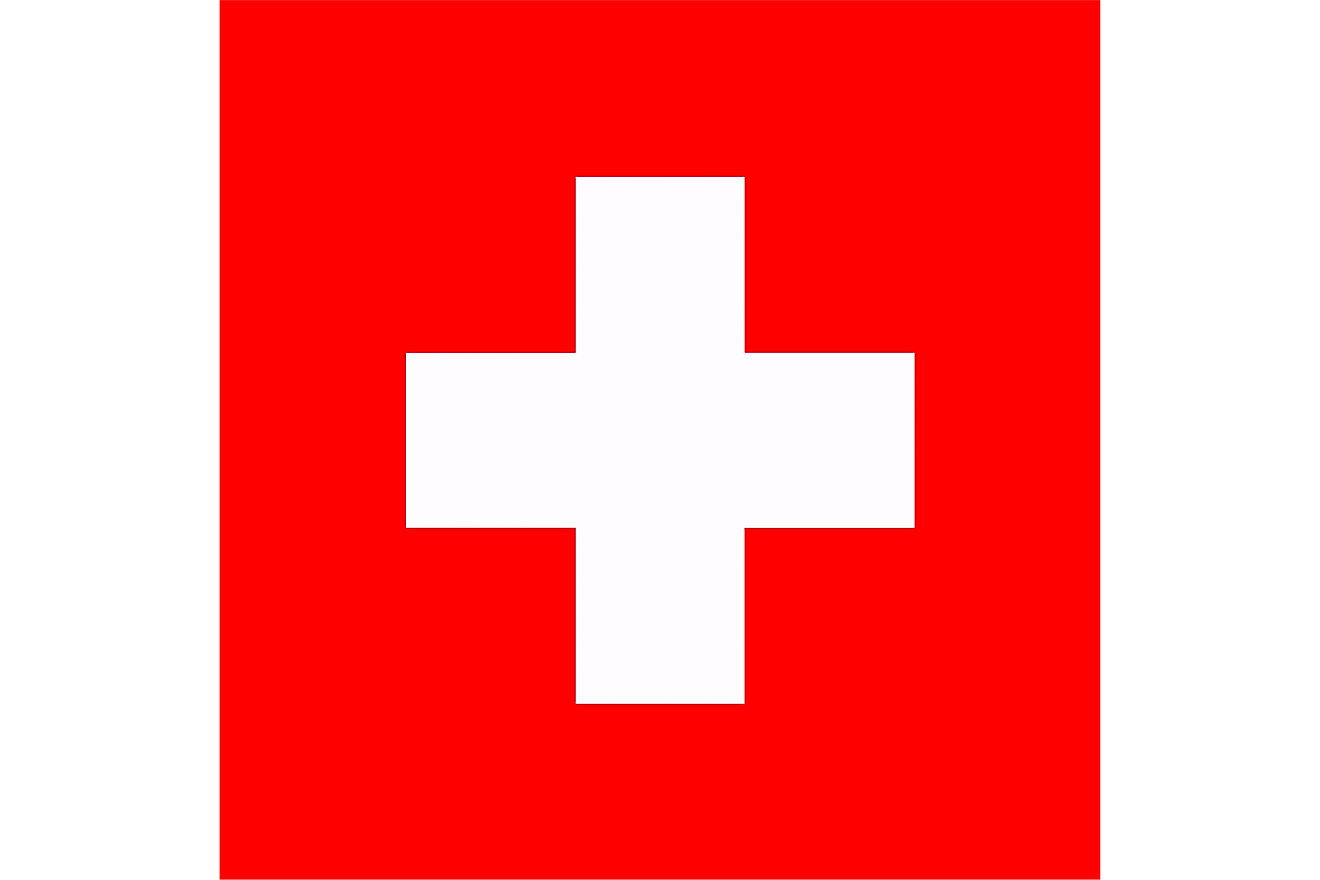
The National Flag of Switzerland was officially adopted on December 12, 1889.
The National Flag of Switzerland is a red square flag with a bold, equilateral white cross in its center. The four arms of the cross are of equal length and do not extend to the edges of the flag. The design of the flag has been derived from an almost similar designed banner that was used by the Holy Roman Empire and therefore has strong Christian connotations. The red field with a centered white cross was adapted from the flag of Schwyz, one of the original three cantons (regions) of the country. The Swiss Constitution does not state the meaning of the colors and symbols of the national flag of Switzerland but several theories in the country attest to the meaning of these colors and symbols. One common explanation is that the Swiss Cross is used as a representation of Switzerland’s characteristic neutrality during global conflicts and wars (the country has not participated in international wars for centuries). A historical explanation has it that the white cross was a representation of a “Patenmedallie” cast offered to Princess Claude of France in 1547 by Hans Jakob Stampfer as a baptismal gift. The flag has proportions of 1:1.
History of The Swiss National Flag
The history of the Swiss national flag goes back to the Middle Ages. Historians believe that the white cross on the flag had its origin during the Battle of Laupen of 1339 when it was used for the identification of troops of the Old Swiss Confederacy. The white stripes that formed crosses were used because it contrasts the flag of Habsburg Austria and that of Burgundy and Maximillian I and thus helped to distinguish the Swiss troops from their adversaries on the battlefield. The white flag was later adopted as the official identification of the Old Swiss Confederacy and was displayed during the Battle of Arbedo of 1422 as well as the Battle of Nancy of 1477. However, even before the Battle of Laupen, the Schwyz region of the Old Swiss Confederacy already had its official flag which was a solid red flag after the region was granted immediacy in 1240. Schwyz supported the conquest of King Rudolf of Habsburg against Burgundy, and in return, the King granted Schwyz permission to represent the cross on its flag, the first time in Swiss history. Napoleon Bonaparte had imposed a tricolor green flag containing the colors green, red, and yellow on the Helvetic Republic (1798-1803). This flag was abandoned immediately after the fall of Napoleon’s regime.
Symbols of Switzerland
The National Coat of Arms of Switzerland

The Swiss Coat of Arms is an adaptation of the national flag onto a triangular shield. The Federal administration has been using the triangular shield since the beginning of the 20th century. The current design of the Swiss Coat of Arms has been officially used since 1889.
National Motto (Unofficial)
"Unus pro omnibus, omnes pro uno" ("One for all, all for one")
National Anthem
- Anthem Title: "Swiss Psalm" (German: Schweizerpsalm)
- Music Composer: Alberich Zwyssig
- Lyricist: Leonhard Widmer
- Date of Adoption: April 1, 1981
"Swiss Psalm" (German: Schweizerpsalm) is the national anthem of Switzerland. The music of the anthem has been composed by Alberich Zwyssig. The original German lyrics of the anthem had been written by Leonhard Widmer. Since, Switzerland has four national languages, the original German lyrics have been translated into the other three national languages. Charles Chatelanat translated the lyrics into French: "Cantique Swisse". Camillo Valsangiacomo translated the lyrics into Itlalian: "Salmo Svizzero". Flurin Camathias had translated the lyrics into Romansch: "Psalm Svizzer". The anthem was officially adopted on April 1, 1981.
"Schweizerpsalm" (German)
First Verse:
Trittst im Morgenrot daher,
Seh’ ich dich im Strahlenmeer,
Dich, du Hocherhabener, Herrlicher!
Wenn der Alpenfirn sich rötet,
Betet, freie Schweizer, betet,
Eure fromme Seele ahnt...
Eure fromme Seele ahnt...
Gott im hehren Vaterland!
Gott, den Herrn im hehren Vaterland!
Second Verse:
Kommst im Abendglühn daher,
Find ich dich im Sternenheer,
Dich, du Menschenfreundlicher,
Liebender!
In des Himmels lichten Räumen
Kann ich froh und selig träumen;
Denn die fromme Seele ahnt
Denn die fromme Seele ahnt
Gott im hehren Vaterland!
Gott, den Herrn, im hehren Vaterland!
Third Verse:
Ziehst im Nebelflor daher,
Such ich dich im Wolkenmeer,
Dich, du Unergründlicher, Ewiger!
Aus dem grauen Luftgebilde
Bricht die Sonne klar und milde,
Und die fromme Seele ahnt
Und die fromme Seele ahnt
Gott im hehren Vaterland!
Gott, den Herrn, im hehren Vaterland!
Fourth Verse:
Fährst im wilden Sturm daher,
Bist du selbst uns Hort und Wehr,
Du, allmächtig Waltender, Rettender!
In Gewitternacht und Grauen
Lasst uns kindlich ihm vertrauen!
Ja, die fromme Seele ahnt
Ja, die fromme Seele ahnt
Gott im hehren Vaterland!
Gott, den Herrn, im hehren Vaterland!
"Swiss Psalm"
First Verse:
When the morning skies grow red
And o'er their radiance shed,
Thou, O Lord, appeareth in their light.
When the Alps glow bright with splendour,
Pray, free Swiss, Pray,
For you feel and understand,
For you feel and understand,
That he dwelleth in this land.
That he dwelleth in this land.
Second Verse:
In the sunset Thou art nigh
And beyond the starry sky,
Thou, O loving Father, ever near
When to Heaven we are departing,
Joy and bliss Thou'lt be imparting,
For we feel and understand
For we feel and understand
That Thou dwellest in this land.
That Thou dwellest in this land.
Third Verse:
When dark clouds enshroud the hills
And gray mist the valley fills,
Yet Thou art not hidden from Thy sons.
Pierce the gloom in which we cower
With Thy sunshine's cleansing power
Then we'll feel and understand
Then we'll feel and understand
That God dwelleth in this land.
That God dwelleth in this land.
Fourth Verse:
Towards us in the wild storm coming,
You yourself give us resistance and
stronghold,
You, almighty ruling, rescuing!
During horror and nights of thunderstorms
Let us childlike trust Him!
Yes, we feel and understand;
Yes, we feel and understand;
That God dwelleth in this land.
That God dwelleth in this land.
The Currency of Switzerland is the Swiss franc
The current official currency of Switzerland is the Swiss franc (Fr., CHF). The abbreviation "CHF" is derived from the Latin name of the country, "Confoederatio Helvetica," with an "F" appended to represent "Franc". Switzerland’s political neutrality and monetary prudence of its central bank make the Swiss Franc one of the strongest and stable currencies in the world.
The smaller denomination that is a hundredth of a Swiss franc is known as Rappen (in German), as centime (in French), as centesimo (in Italian), and as rap (rp.) in Romansh.
Coins
The coin-issuing privilege is held by the Swiss Confederation. However, the federal Swissmint produces coins on behalf of the confederation. The Swiss Confederation has assigned the task of distributing coins to SNB, via its network of bank offices. The Swiss franc coins are in the denominations of 5 francs, 2 francs, 1 franc (100 centimes), ½ francs (50 centimes), 20 centimes, 10 centimes, and 5 centimes.
Banknotes
Banknotes are issued by The Swiss National Bank (SNB). The banknotes are printed by Orell Füssli Security Printing Ltd. on behalf of the SNB. The Swiss franc banknotes include 10 francs, 20 francs, 50 francs, 100 francs, 200 francs, and 1000 francs. Swiss banknotes feature all the four national languages (Germany, Romansh, French, and Italian) of Switzerland.
Historical Currencies of Switzerland
The official name of Switzerland is the Swiss Confederation. It consists of 26 “cantons” and "half-cantons". Before 1850, Cantons and 75 additional entities used to issue their coins. Private Banks used to circulate their banknotes as well. In 1848, the Swiss Federal Constitution was passed. This constitution gave an exclusive right to issue currency to the Federal government. On May 7, 1850, the Federal Assembly passed the Federal Coinage Act and created the Franc as the currency of Switzerland.
In 1907, the First banknote series known as Interim banknotes started circulating. The second series of banknotes were issued between 1911 and 1914. The third series of notes were circulated between 1918 and 1930. The third series was only partially issued. Banknotes of the Fourth series (1938) were designed by the two painters, Victor Surbeck and Hans Erni. However, none of the banknotes of this series were put into circulation. The fifth series (1956) was designed by Pierre Gauchat and Hermann Eidenbenz. For the first time, in the fifth series, a 10-dollar Franc was issued. The Sixth banknote series (1976) was designed by Ernst and Ursula Hiestand. These banknotes were recalled on May 1, 2000, and are no longer legal tender. The notes of the Seventh series (1984) were designed by Roger and Elisabeth Pfund. However, these notes were never circulated and were duly destroyed. The Eighth banknote series, designed by Jörg Zintzmeyer, was brought into circulation between 1995 and 1998. Banknotes of the Ninth series (2016) are entering circulation in a phased manner. The 50-franc note of this series was issued on April 12, 2016, and the 20-franc note was issued on May 17, 2017.
